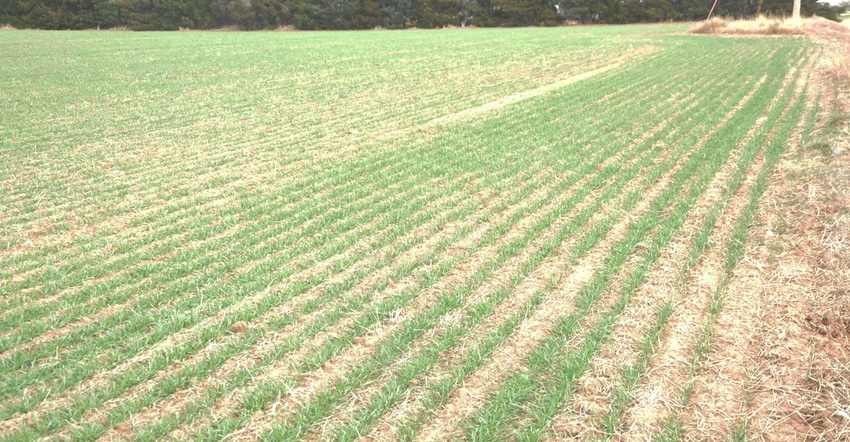
Drought is deepening across Kansas, even as a couple of winter squalls have brought some snowfall and icy conditions to roadways.
The dreaded red of “extreme drought” crept into four southern Kansas counties — Meade, Clark, Comanche and Barber — in the drought monitor map released Jan. 11.
Severe drought covered 17.23% of the state, up from 8.75% on Jan. 4. More than half the state, 52.43%, is in at least moderate drought, up from 32% on Jan. 4. Abnormally dry conditions cover the entire state.
Across Kansas, there is growing concern about what impact drought, coupled with extremely cold temperatures, will have on the 2018 winter wheat crop. South-central Kansas has experienced two cold snaps in January that dropped temperatures to below zero.
The three-month long-range outlook for Feb., March and April doesn’t offer a lot of encouragement, showing Kansas, especially southwestern Kansas, likely to see above average temperatures and below average precipitation during that period.
Looking at one of the drivers of the warm, dry winter conditions, the El Niño Southern Oscillation, forecasters believe the ongoing weak-to-moderate La Niña is currently peaking and will weaken into the spring.
The strength of an event isn't strongly linked to the strength of the impacts in the U.S., but strength does increase the likelihood that at least some level of the typical impacts will be felt. The next El Niño update will be on Feb. 8.
The potential for winter-kill damage has a lot of farmers worried about what they will see in fields when wheat breaks dormancy next spring.
Much of the crop was planted late, both because of a lack of moisture and because farmers were concerned about the spread of last year’s severe outbreak of Wheat Streak Mosiac, which can be made worse by warm temperatures that allow the wheat curl mite, the vector for WSM, to survive and infect the new crop.
Much of the crop had barely emerged when a cold snap at the end of November sent it into dormancy. In many fields, tillering was just beginning and the root systems are shallow. The shallow root system, coupled with extremely dry soil, increases the likelihood of winterkill.
About the Author(s)
You May Also Like




